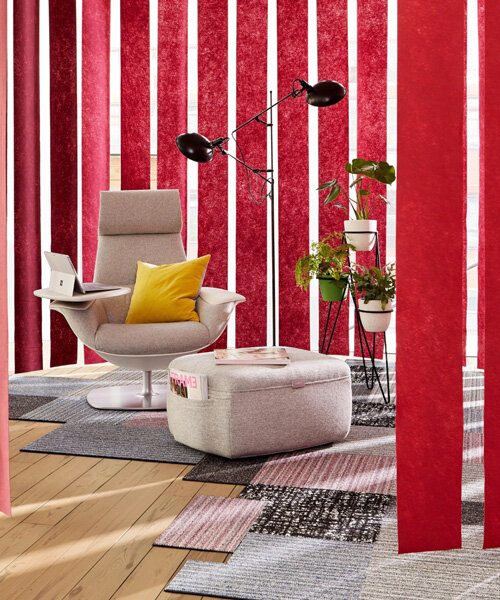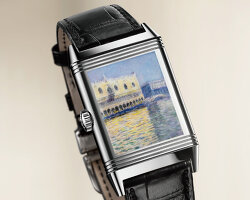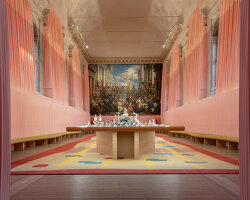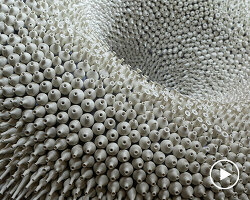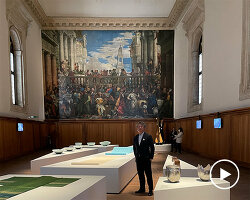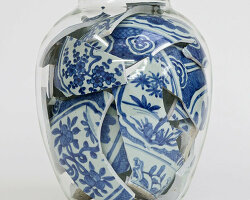FORCOLA – THE TYPICAL VENETIAN ROWLOCK
Off of Strada Nova — Venice’s main street — is Il Forcolaio Matto, the workshop of Piero Dri, the youngest remèr in La Serenissima. Dating back to 1307, the remèr is the maker of oars for Venetian gondolas. This activity has since been placed side by side with the production of forcole — the typical Venetian rowlock providing a variety of fulcrum positions.
On the occasion of Homo Faber, designboom visited Il Forcolaio Matto, where Piero Dri expanded on his practice. Watch the video above and enjoy our exclusive tour. The visits to local artisans are part of the collateral Homo Faber program in the city.
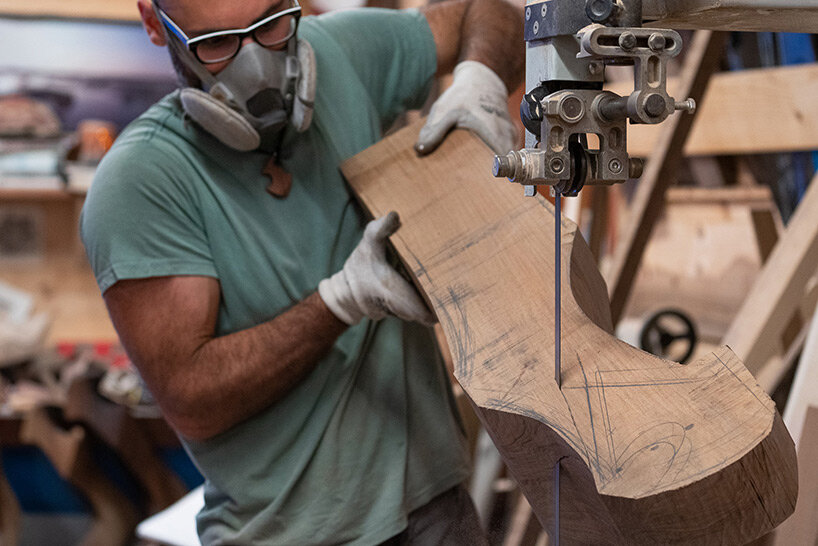
image courtesy of Il Forcolaio Matto
AN ANCIENT CRAFT DATING BACK TO 1307
A craft exclusive to Venice, the forcola is manufactured by the remèr. The ancient craft, which dates back to over 700 years ago, must be carried out with passion, perseverance, and extraordinary manual skills to equip rowers with an extremely refined object in aesthetic terms and efficient from a technical and functional point of view.
‘I make and sell the traditional Forcola of Venice,’ said Piero Dri. ‘I love to define the Forcola as a functional sculpture, where technical and artistic features find a magical balance. The Forcola is a symbol of the woodcraft in Venice and it’s the strongest link with the real authentic Venice. My clients are Venice lovers. They want a piece of Venice in their home.’
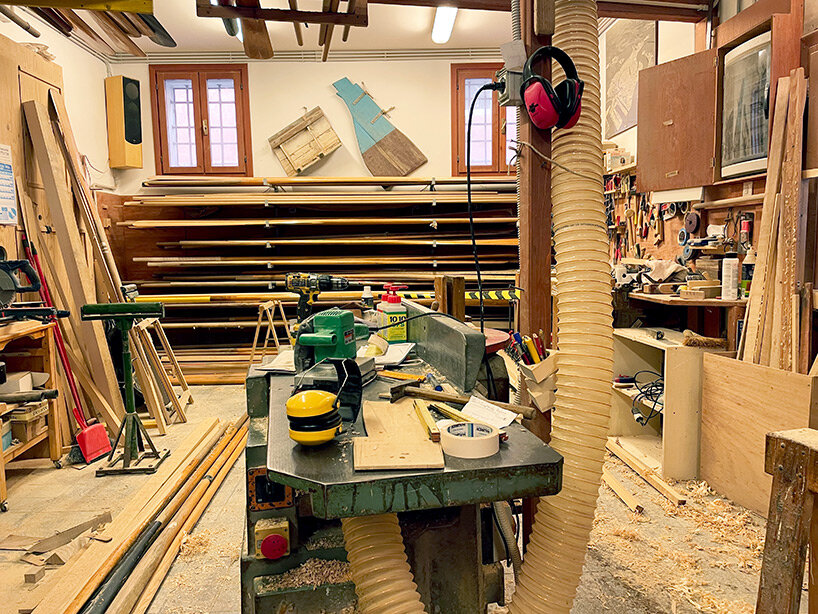
images © designboom unless otherwise stated
Characterized by its wooden smell, Il Forcolaio Matto manufactures and sells finished forcole. Each one is carved from a unit block of wood, handpicked by the remèr, giving priority to the health, strength and beauty of the grain. The logs are usually European walnut trees, measuring at least 60 cm. When they are still wet, they are cut into four quarters each. At best, each quarter will result only in one forcola. The first step consists in drying the wood, and it can take up to three years. Every Forcola is completely tailor-made according to the gondolier’s height and to his personal rowing style. The experienced remèr will understand the right measure of the Forcola proceeding with the rough cut of the outline.
After 10-30 hours of hand working (it depends on the Forcola size and the model), the Forcola can be polished using fine sandpaper, always by hand, in order to reach the edges’ perfection. The final step is applying many coats of herbal oil. This makes the wood shine, and highlight’s the real color of the grain.
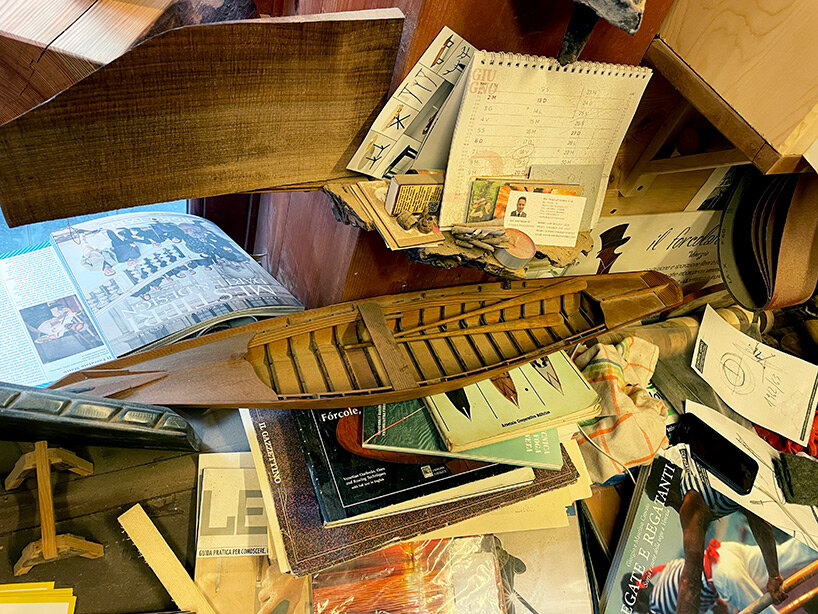
‘Each forcola I create is like a journey,’ continues Dri. ‘I start by studying the walnut wood trunk, as though I were in a foreign land which will slowly become friendlier. I outline the forcola with care, respecting the grains of the wood, and then embark on the task, sweating and taking delight in the hard work. Every now and then, I observe it as a traveller would when he gazes back to see how far he has come, and stops for a moment to contemplate the scenery. I work slowly at times, and at others with a sense of urge, vigor and tenderness until I begin to see the curves and the lines I wanted emerging from the wood. Completing a forcola is a bit like crossing a finish line. I savor the moment as it will stay for ever. Something has been created. And I must wait a little longer before embarking on another journey.’
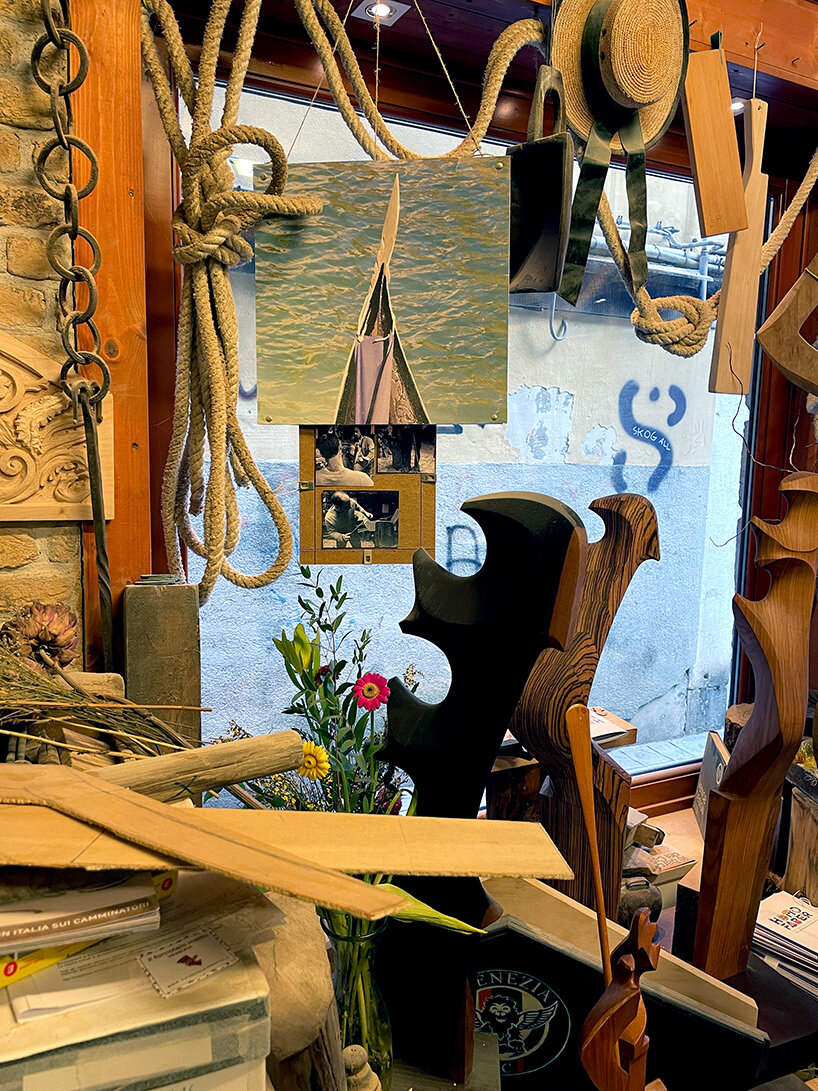
Due to the very particular aesthetic qualities of the forcola, this object is recognized as a true piece of art, an elegant sculpture which may be placed as a piece of interior decor in one’s home. The forcola may also be given as a fine present for important occasions such as, for example, a wedding or an anniversary.
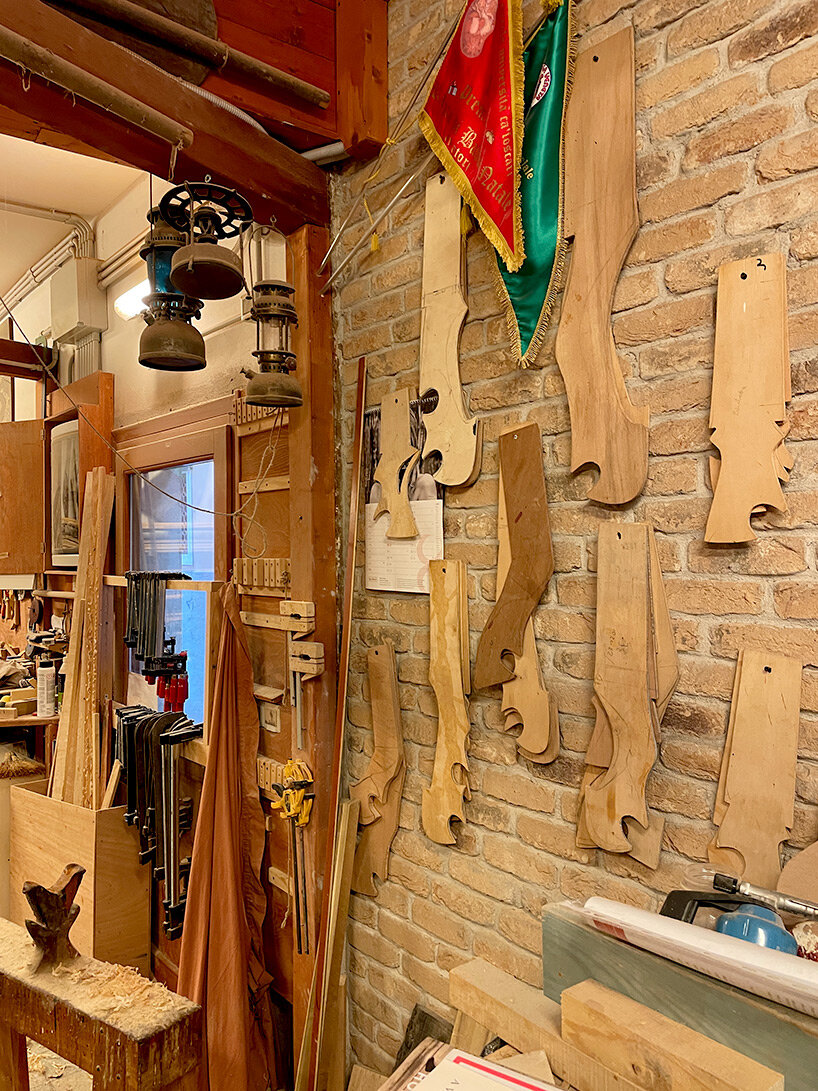
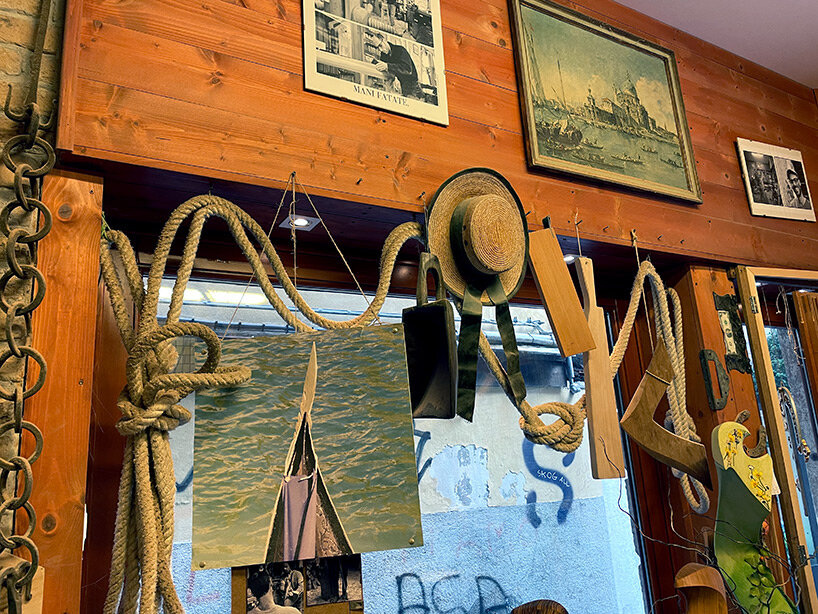

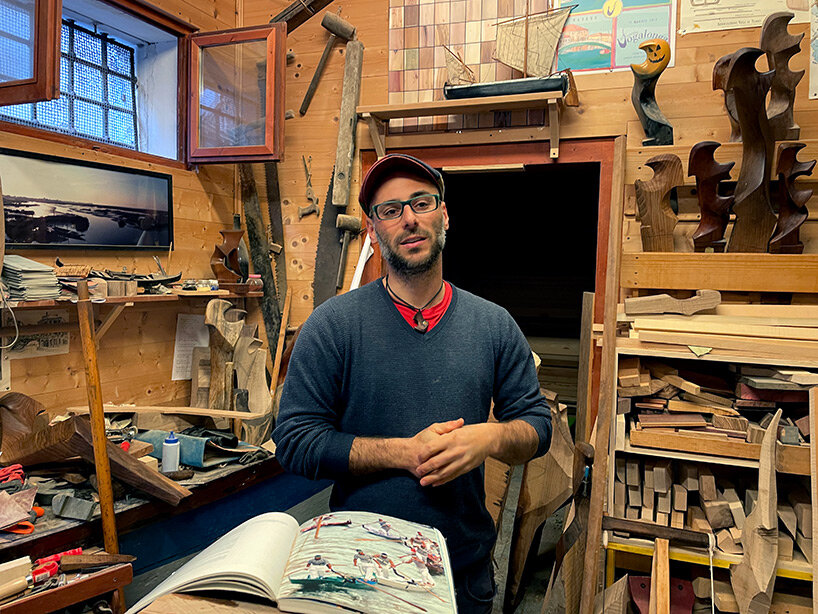
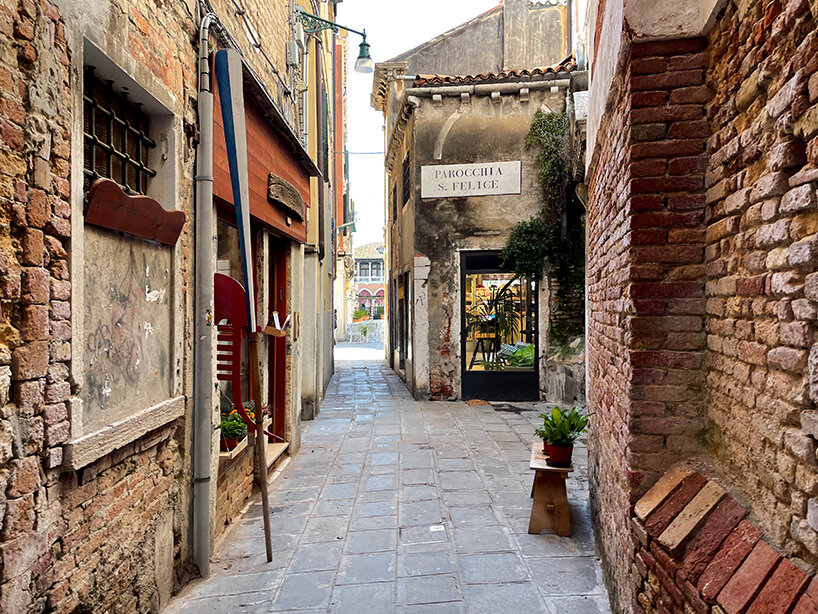
exhibition & tour info:
name: homo faber event | homo faber in città
organization: michelangelo foundation for creativity and craftsmanship
exhibition location: fondazione giorgio cini, san giorgio maggiore island – venice, italy
date: april 10 – may 01, 2022
location info:
name: Il Forcolaio Matto workshop
location: venice, italy
